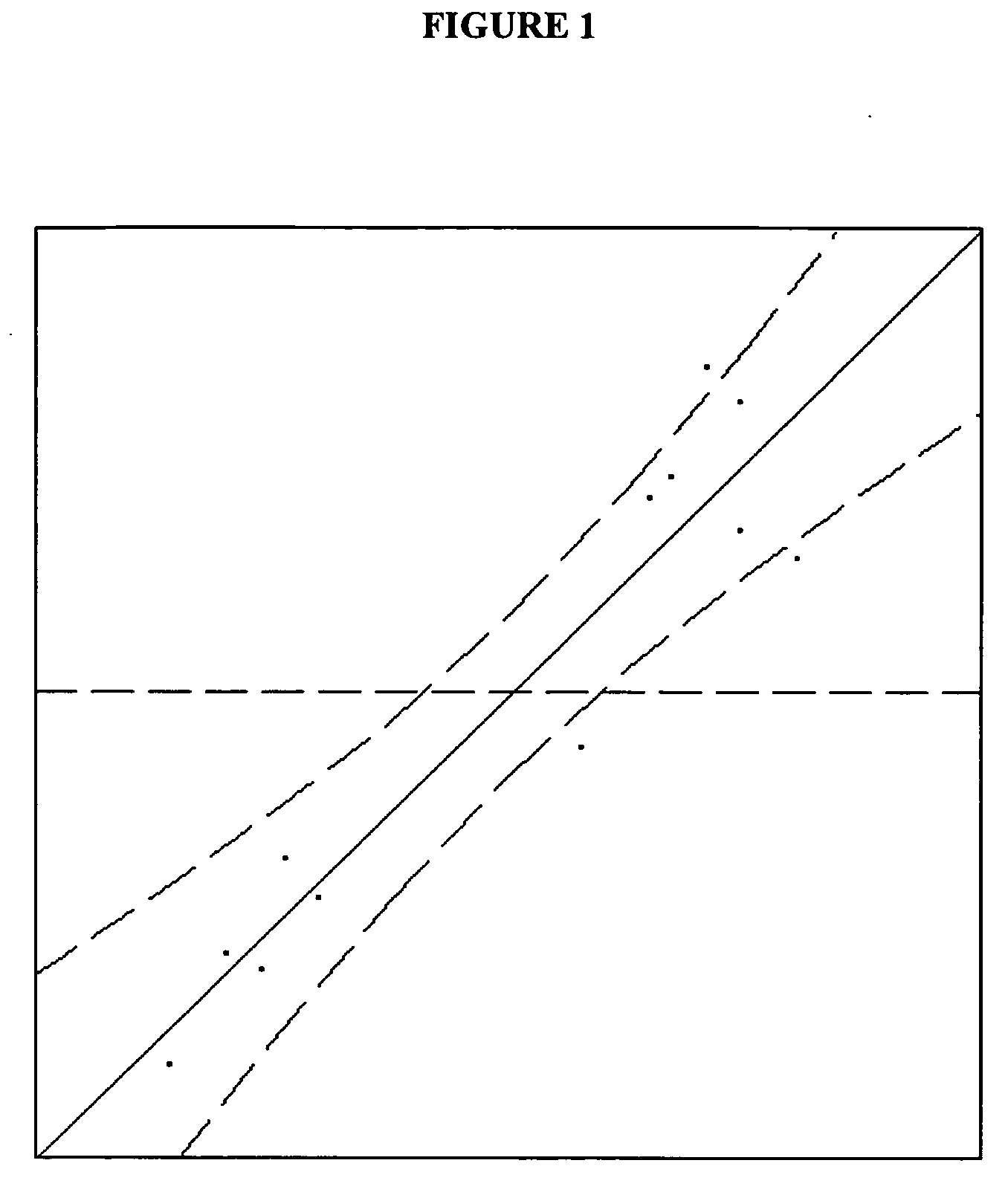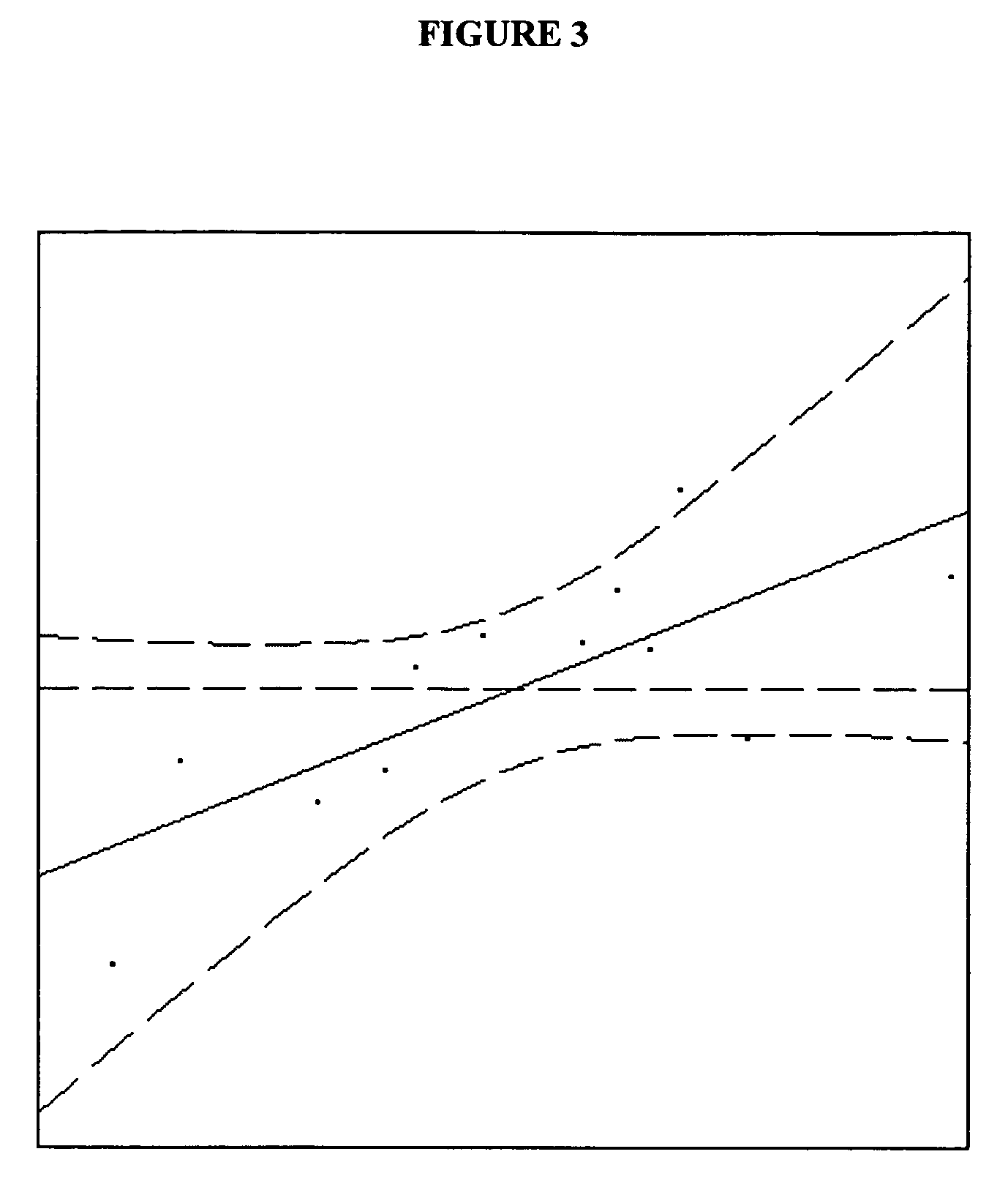High protein, low carbohydrate pasta
a high protein, low carbohydrate technology, applied in the field of high protein, low carbohydrate pastas, can solve the problems of less desirable eating, unlikely texture of cooked pasta, high amounts of dietary fiber, etc., and achieve the effect of low fiber, high protein and low carbohydra
- Summary
- Abstract
- Description
- Claims
- Application Information
AI Technical Summary
Benefits of technology
Problems solved by technology
Method used
Image
Examples
example 1
[0039] This example illustrates a method of manufacturing pastas of the present invention using a single-screw extruder.
[0040] Traditional pasta manufacturing methods were used. Specifically, a single screw to twin screw extruder with a longer length to diameter ratio was used (approximately 20 L:D). In a single screw extruder (Defrancisi Machine), the dry blend was loaded into a loss in weight feed hopper and metered through a rotary air lock into a vacuum chamber. Water was added in the vacuum chamber to bring the total water content to 30%. The partially wet dough was then fed into the single screw extruder, in the mouth of which additional water was added bringing the total water content in the dough to 50-60%. The dough was pushed through the single screw extruder, and exited though shaped dies at approximately 55° C. A cutter could have been present for short goods like elbows or shells. The fresh protein pasta was then dried. Drying was accomplished by traditional means: 5 h...
example 2
[0041] This example illustrates a method of manufacturing pastas of the present invention using a twin-screw extruder.
[0042] A twin-screw extruder, such as an APV MPF 40 was also used. Protein Pasta dry blend was filled into a hopper and fed by a metering screw into the mouth of the extruder. A low shear screw was used consisting of a low shear blending zone in the feed section followed by double flight forward screws through the remainer of the barrel. Water was added in the feed section bringing the dough to 40-60% total moisture. Cooling was used to maintain a barrel temperature of 20° C. or less. Dough exited the extruder through dies and was collected as short or long goods.
example 3
[0043] This example illustrates a method of making the present inventive pasta in a home kitchen, as opposed to a commercial kitchen.
[0044] A Kitchen-Aid mixer with a meat grinder and pasta die attachment was also used. The protein pasta was blended with water to approximately 50% water by weight in the mixing bowl. The bowl was removed and the meat grinder was attached to the KitchenAid mixer with a pasta die present at the grinder exit. A golf ball-sized dough was stuffed into the throat of the meat grinder. The single screw within the meat grinder pushed the dough out through pasta dies resulting in finished product that was cooked immediately. For dry storage prior to use, it was air dried overnight, oven dried at 200° F., or dried in a food dehydrator.
PUM
 Login to View More
Login to View More Abstract
Description
Claims
Application Information
 Login to View More
Login to View More - R&D
- Intellectual Property
- Life Sciences
- Materials
- Tech Scout
- Unparalleled Data Quality
- Higher Quality Content
- 60% Fewer Hallucinations
Browse by: Latest US Patents, China's latest patents, Technical Efficacy Thesaurus, Application Domain, Technology Topic, Popular Technical Reports.
© 2025 PatSnap. All rights reserved.Legal|Privacy policy|Modern Slavery Act Transparency Statement|Sitemap|About US| Contact US: help@patsnap.com



